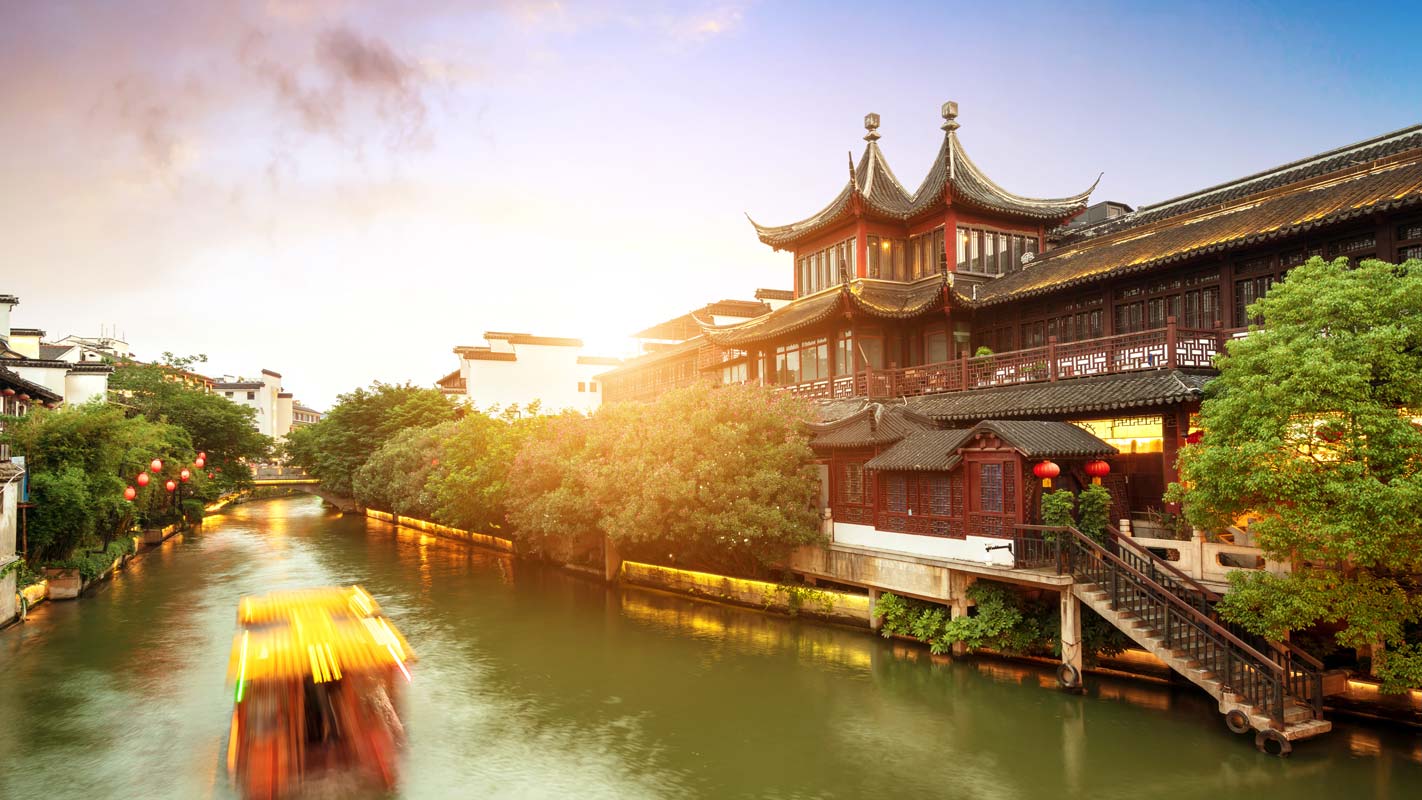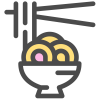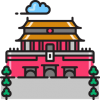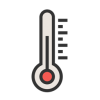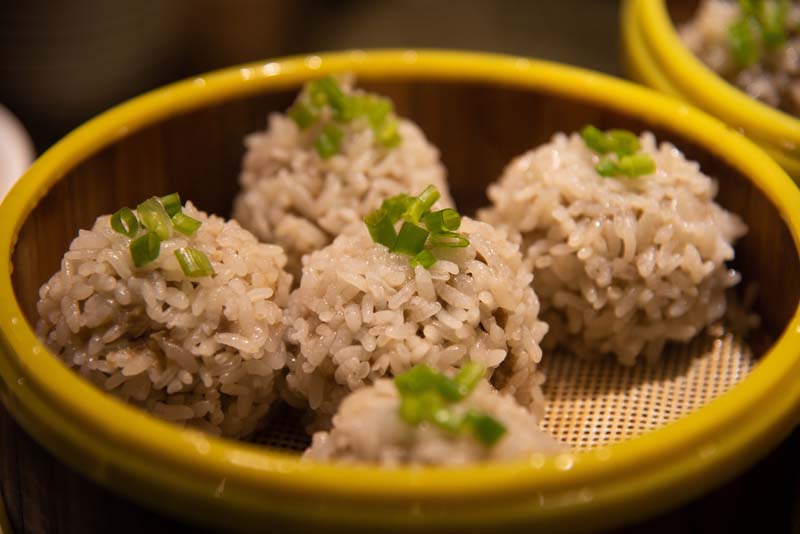
Featured Cuisine
Food in Nanjing have common features of Huai-Yang cuisine: light and not greasy.
Duck Blood Soup
The name of this dish may sound odd to foreigners who might wonder how the blood and soup is combined. Actually Chinese people do eat the blood of duck, goose and chicken but in a unique way. They collect the blood of a freshly killed duck or goose and stir, then seal and refrigerate until ready to use. The result is blood cakes. Thesoup is seasoned with salt, pepper, and subtly spicy undertones. Simmer gently for several minutes and serve with eggs, noodles and caraway. This food is the top of all travelers’ recommendations. The cheap stalls at Fuzimiao dining street sell the best at 3.5 yuan.
Gan Si
Gan Si (Shredded Bean-curd Sheets), a refreshing cold dish made of Bean-curd sheets. The bean-curd sheets are cut finely into threads with seasoning of sauce, sesame oil and vegetables shreds of bamboo root, mushroom, chicken or meat. It has fine shreds and a tender taste. It can also be boiled in broth and served with other meat shreds.
Dou Fu Nao (Tofu Pudding)
This is a great breakfast-time soup dish made from tofu (bean curd), mushrooms, coriander and chilli. The best place to taste it is Liu Feng Ju.
Pressed Duck
A legend goes that in China‘s Southern Dynasties (420 – 589) an emperor was besieged by enemies in the imperial city. Soldiers guarded the city and fought hard in bloody battles. Women made salted ducks and wrapped them with leaves to preserve the flavor. Ducks were packed into a large jar and delivered to the soldiers. When the soldiers unwrapped the ducks, they found the ducks pressed flat, thereby the name Pressed Duck.

Nanjing has been the capital of several Chinese imperial dynasties. It has a variety of historical and cultural heritage evident in its architecture like imperial mausoleums, old temples, traditional garden buildings, and museums.
The Confucius Temple
The Confucius Temple in Nanjing was originally constructed in the year of 1034 in the Song Dynasty. It was a place to worship and consecrate Confucius, the great philosopher and educator of ancient China. It is also known as Fuzimiao in Chinese. It suffered repeated damage and has been rebuilt on several occasions since that time. 1937 was the most destruction when it was burnt to ruin by Japanese aggressors. In 1984 the temple was rebuilt under the support of the local government.
Qinhuai River
Qinhuai River is the largest river in the Nanjing City area and is the ‘life blood’ of the city. It is so fascinating that it captures the imaginations of people both at home and abroad.
Dr. Sun Yat-sen’s Mausoleum
Dr. Sun Yat-sen’s Mausoleum is located in the Zhong Mountain Scenic Area in the east suburb of Nanjing City, Jiangsu Province. As the mausoleum of Dr. Sun Yat-sen, the father of the Republic of China, it is considered the
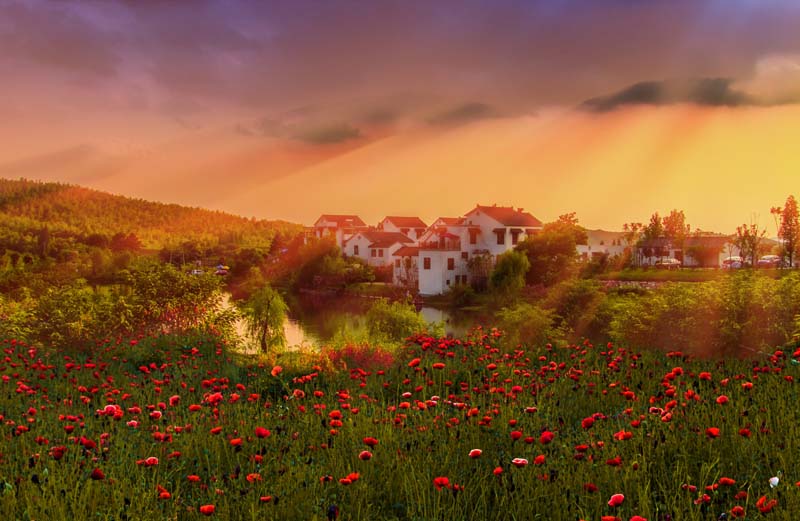
Nanjing is Northern subtropical monsoon climate, obvious four seasons. Average temperature of year is 16°C, precip is 117 days per year. End of June to middle of July is rainy season.
Spring & Summer
Spring
The spring of Nanjing, enjoying a decent temperature, is the most comfortable season for visitors.
Summer
The average annual temperature in Nanjing is about 15°C (60°F) and the time from mid-June to July is the rain period. Known as one of the three hottest cities in China, Nanjing’s scorching summer period is to be avoided. The average ground temperature can reach 35°C (95°F) and the extreme highest point could reach 40°C (104°F) sometimes.
Autumn & Winter
Autumn
The short and comfortable autumn time from October to mid-November is the best travel period for the city.
Winter
Unlike other southern cities in China, in December, it sometimes snows in the city. If fortunately, (may not be fortunate for some people), you will have an opportunity to appreciate the enthralling white snow world of Nanjing. In the coldest month – January, the temperature could be as low as -7°C (19°F).
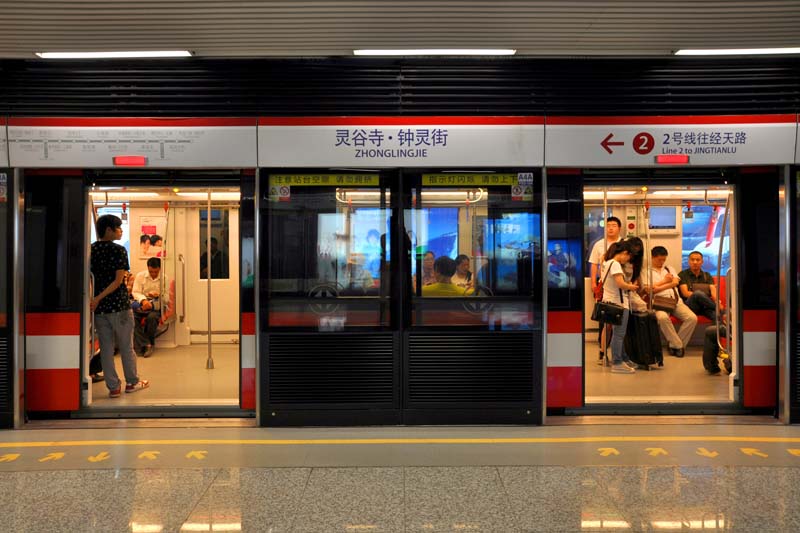
Nanjing International Airport
Nanjing Lukou International Airport is the “Gate” of Jiangsu Province, the third largest airport in eastern China and one of main air hubs in the country. For passengers’ convenience, there are not only shuttle buses running between the airport and downtown area, but also buses between the airport and nearby cities like Huai’an, Yangzhong, and Shuyang, etc. From the airport to Nanjing: The 30-minute taxi journey to the city centre costs ¥100 or more. It is usually cheaper to take the airport bus to the centre and take a taxi from there.
Nanjing Train
Nanjing is an important meeting point of the country’s north-south and east-west railway trunks, which connects northern, eastern and middle regions of the country.
The passenger transportation is handled at two railway stations:
Nanjing Railway Station is operating regular and partial high-speed trains and South Railway Station is operating high-speed trains.
Nanjing City Bus
Compared with the subway, city buses are more flexible. They can take passengers almost anywhere they want in the city. The ticket fare is CNY 1 for regular buses and CNY 2 for air-conditioned ones.
Nanjing Taxi
Taxis travel the main streets in the city. Compared with the big cities like Beijing and Shanghai, it is not difficult to hire one. The taxi fee for first three kilometers (about 1.9 miles) is CNY 9 and CNY 2.4 for extra per kilometer (about 0.6 mile) in daytime and CNY 2.7 in night time; in addition, a fuel surcharge of CNY 2 / ride is charged. Tip: Be careful of taking taxi from a bus station or railway station. Unlicensed taxi touts can be very expensive.
Transportation Smart Card
There are two kinds of transportation card in Nanjing. The one applicable to tourists is Public Utility IC Card (PUIC; also called Jin Ling Tong in Chinese). The card holders can enjoy a 20% discount on city buses, 5% discount on subway lines, 50% discount on Zhongshan Pier – Pukou ferries and 10% discount on other ferries.


